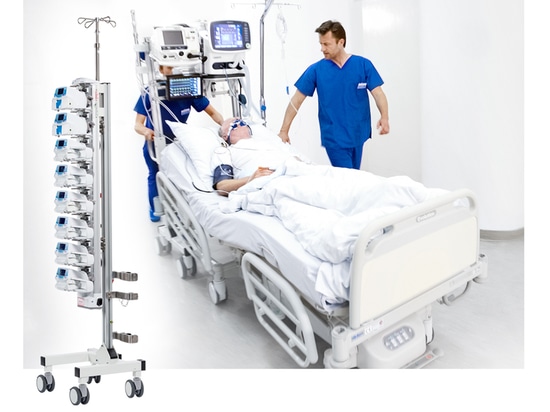By: American Association for Respiratory Care
Published: American Association for Respiratory Care
Date: Developed November, 2009 & Revised October, 2017
Transport of the mechanically ventilated, critically injured or ill neonatal, pediatric and/or adult patient is always associated with a degree of risk. The risks of transporting the mechanically ventilated patient need to be minimized through careful preparation prior to the transport, good hand-off communication between all parties, continuous monitoring throughout the transport, and assurance of patient stability with final hand-off. The use of appropriate transport equipment that has the ability to function from a battery source in the event of a power failure and personnel appropriately trained to deal with varying circumstances are also essential.
Inter-hospital transport refers to the emergency transport from one facility to another for acute life- threating illnesses. This is emergency transportation that is needed due to the lack of diagnostic facilities, staff, clinical expertise or facilities for the safe and effective care of the patient and delivery of therapy by the referring hospital.
Intra-hospital transport refers to the transport of critically ill patients from one area of a hospital to another within the hospital.
The American Association for Respiratory Care (AARC) recognizes the following as the minimum standards for the safe transport of the mechanically ventilated, critically injured or ill, patient:
- Transports will be performed by a team consisting of, at a minimum, a Respiratory Therapist and a Registered Nurse with critical care experience.
- One member of the transport team will have the appropriate advanced life support certification (NRP, PALS and/or ACLS) to address the needs of the patient.
- A minimum of one member of the transport team will be competent in airway management. Appropriate airway management equipment and an adequate gas supply will be readily available during the transport.
- Transport monitors will provide real-time measurement of all essential parameters.
- All patients receiving mechanical ventilation will have some form of a carbon dioxide monitor inplace during transport as this monitor is useful in providing information regarding both airwayplacement and pulmonary blood flow.
- A trial of mechanical ventilation using the planned transport device will be conducted to assesspatient tolerance and stability before proceeding with the transport whenever possible.
- Transportation will be performed according to the AARC Clinical Practice Guideline entitled “In-hospital transport of the mechanically ventilated patient.”
Source: https://www.aarc.org/wp-content/uploads/2014/10/statement-of-transport-mechanically-ventilated-critically-injured-ill.pdf
Image: https://img.medicalexpo.com/images_me/projects/images-om/25566-12988464.jpg
Analysis:
The purpose of this article provides insight to the overall procedure of transporting a mechanically ventilated patient. With a brief overview, the team members that assist the patient during transportation must account for: transportation preparation, hand-off communication, continuous monitoring, patient stability assurance, use of appropriate and functioning equipment, and specifically trained personal to accompany the patient along with the team members for unexpected occurrences. Moreover, as listed above are further constraints that must be present and accounted for to properly follow the procedure of a intrahospital transport (IHT). This information allows me to understand more specifically who’s involved while a patient is being transported and the roles that each team member must fulfill. With all members working together the outcome will be a successful transport. However, if and area or areas begin to malfunction and the patient experiences a complication, due to the movement of the transport, then the potential risks will come to fruition. Additionally, it is crucial to note the outside factors aside from the, mechanical ventilator, to understand the user-experience from varying stakeholders of an IHT transport. With such identifications, I can acknowledge those who directly impact the patient and who coordinate and monitor the ventilator to assess and gain further insights form.




